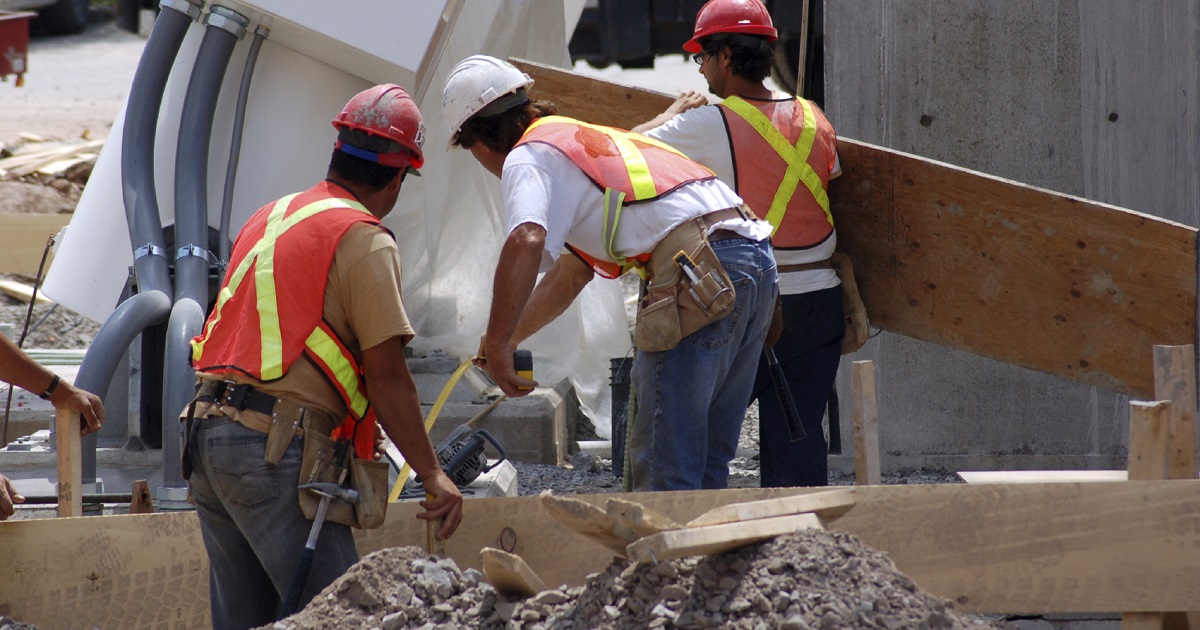For Media Inquiries
Contact Revee White, Director of Marketing and Communications at rwhite1@mem-ins.com or 573.499.4190.
In today’s world, we value spending time in our favorite places. Many of them began as large-scale projects. Plumbers, carpenters and engineers came together to build our homes, shopping malls and grocery stores. Everything from parking lots to playgrounds often require cooperation between different trades. But when it comes to multi-employer worksites, who is responsible for safety? Whose job is it to step up? And what should happen if an incident occurs?
On today’s episode of the WorkSAFE Podcast, we’re joined by two returning MEM experts, Mark Woodward and Chonna Patterson. Woodward provides training and support to policyholders as Senior Safety & Risk Services Trainer. Patterson helps them understand class codes and premium as Premium Consultation Manager – and makes sure they save money wherever they can.
First, we’ll talk about safety responsibilities on a multi-employer worksite. Then, we’ll discuss how accountability is shared. Finally, we’ll explain the importance of work comp insurance and the impact of going without it.
Listen to this episode on the WorkSAFE Podcast, or read the show notes below.
Safety responsibilities on a multi-employer worksite
When it comes to safety responsibilities on multi-employer worksites, the answer is simple for Woodward. “Nobody escapes safety responsibilities on a job site,” he stated firmly. Whether you are a general contractor, project manager or simply a visitor, everyone has some accountability. Is the employer enforcing safety rules? Are the employees following them? Do visitors follow safety requirements, such as wearing a safety helmet or hi-vis vest while on-site?
Every safety guideline is important. That includes the ones set by the Occupational Safety and Health Administration (OSHA), federal and state organizations. “We all have responsibility. Nobody escapes the court system after an incident,” he explained. If an incident were to happen, then everyone shares responsibility. Were all businesses following safety regulations? Did your team follow them?
Working well with other trades
There will projects that require more than one trade. A few may require a dozen separate business or more. It’s natural for them not to know one another. Some employers will want to prioritize profit. But there are three important things employers need to remember:
- Avoid battle between trades. No one wants to work on a job site where fellow trades can’t get along. Don’t step on others. Communicate with them if there is a problem. Talk about issues that come up. Woodward recommends documenting this. A simple morning safety meeting can make a huge difference.
- Plan ahead. Make sure employees understand your safety rules and requirements. Unorganized job sites present safety risks. When are you expected to arrive and finish each day? Share the schedule and shifts.
- Understand expectations. If the job is being led by a general contractor, then what are their expectations? Many contracts are made through a bid process. Read the requirements ahead of time.
For Woodward, it’s important not to ignore hazards, even if they are created by another company. “A hazard that another trade created could get your employee hurt,” he explained. “Your hazard that you created as part of worker construction could get another trade injured.” Further, it isn’t just employees at risk. Pedestrians, job site visitors or delivery people are also put at risk.
Everyone benefits from an incident-free worksite. Customers want to work with safe businesses. They are also more likely to want to partner together in the future. Most importantly, the quality of the work is going to be even better.
Using OSHA’s Multi-Employer Citation Policy
When it comes to multi-employer worksites, it can be hard to know the standards. Each job is different. How can employers know what is expected? Woodward recommends OSHA’s Multi-Employer Citation Policy. It covers safety expectations for projects with more than one employer. OSHA also accepts and responds to Letters of Interpretation. These answer questions about specific situations or standards. They are free to read.
The chain of safety command
Safety is everyone’s responsibility. But how is it organized? “The subcontractor has a duty and responsibility to keep their employees safe first,” Woodward shared. The general contractor has a broader role. They still need to make sure that their own employees are safe. However, they also should monitor the other vendors on the site. Are they following safety regulations?
For example, specialized hazards may be present on the job. Work may be needed in a tight space, or to be done by a specially skilled worker. The subcontractor is responsible for the safety of their employees. The general contractor makes sure they follow job site rules, and don’t pass the work on to unqualified parties.
What if there is no general contractor?
Not every job has a general contractor in charge. For example, a homeowner might direct a remodel in their own home. They’ll connect directly with a roofer, window company or painters. Employers are still responsible for the safety of their employees there. But this is where having a competent person on-site becomes very important.
A foreman or supervisor can lead the charge on these projects. The company owner can, too. When it comes to these types of projects, it’s vital to put your best foot forward. “We really are in direct contact with folks that have hired us. They’re there with us, they’re watching us,” Woodward remarked. “The homeowners are there and we really want to put our best foot forward.” Having a leader on the job site increases communication with the property owner – and other trades. For instance, you don’t want to have too many workers show up when only a few are needed. You also don’t want to be on the job site when another trade’s work might prevent or interrupt yours, or vice versa.
The importance of insurance
Everyone on a multi-employer worksite needs to have work comp insurance. Each business has been hired by someone else. If they don’t have insurance, then responsibility for injuries falls to the person that hired them. A general contractor would be liable for a contractor. A contractor would be liable for a subcontractor.
“If we have a general contractor that’s in charge of this residential build, and they’ve got contractors who are working for them that don’t have their own insurance, that general contractor is going to be responsible,” Patterson explained. They’re going to end up paying more premium and ultimately, if they have to to cover a loss, then that’s going to affect them.” Those effects include everything from premium costs to e-mod.
Homeowners are an exception
One work comp insurance exception applies to homeowners. Businesses hired by property owners are responsible for their own safety, not the owner. “If a contractor were to get injured maybe in one of these residential remodels where there’s not a general contractor, where the homeowner hired him, that contractor’s out of luck,” she added. “They’re going to have to pay for whatever injuries they have.”
It only takes a moment for a life-changing injury to happen. Anything from amputation to brain injuries can cost millions of dollars in medical costs. These situations can threaten the security of a business. Often, there isn’t a simple resolution. “This is a very complex issue,” Woodward said, “And when folks don’t have the right insurance coverage, when they are acting out of what the contracts say, if they’re not following safety best practices, OSHA will get involved.”
Are you covered?
For Patterson, it’s important to hire contractors that have their own work comp coverage. Not doing so can be an expensive mistake. Businesses looking to hire contractors can check them in advance. The Missouri Department of Labor provides tools on their Are You Covered? website.
Understanding your responsibility on multi-employer worksites
It’s important for business to not only work safely on job sites, but to understand what’s being asked of them. What the scope of the work? What role is the general contractor going to play? Do you have the insurance you need? Businesses that show up for a job without work comp coverage may experience issues later. This may include not getting paid. Both Patterson and Woodward suggests working closely with your insurance agent and an attorney on potential contracts. “This is not just a safety issue, it is also a financial issue,” Patterson expressed.
Communication and planning may feel like more work, especially when it’s with companies you haven’t worked with before. However, it has a purpose. “Let’s just take those extra steps to make sure that we get our work done safely and keep our customers happy,” Woodward finished.
For free safety posters, sample policies, and safety toolkits, visit our Resource Library. Then, tune in this WorkSAFE Podcast episode to learn even more about protecting your premium when working with subcontractors with guest Chonna Patterson.


